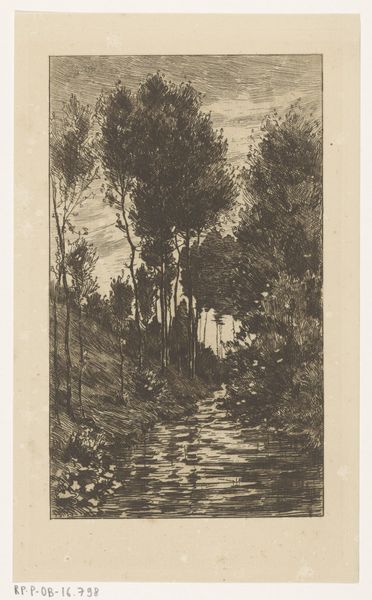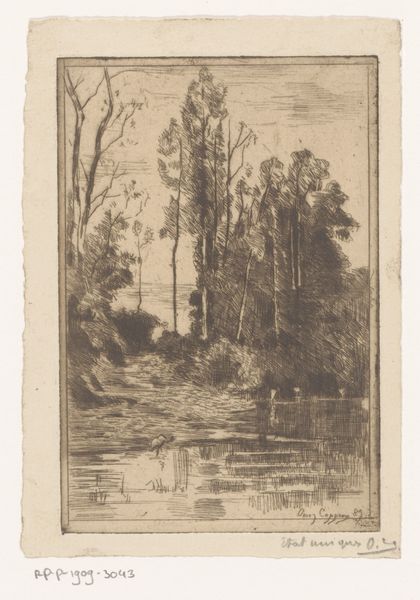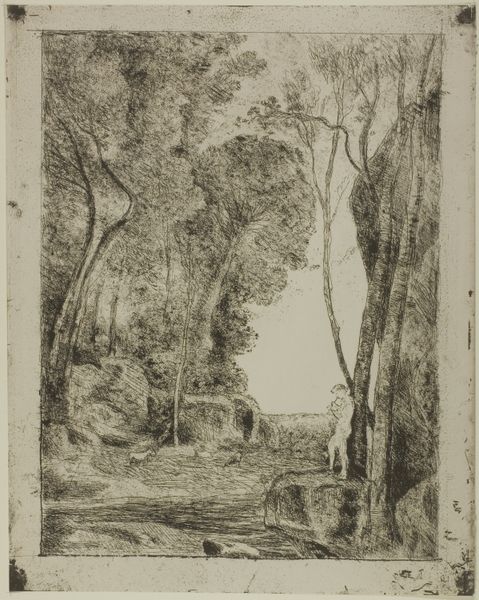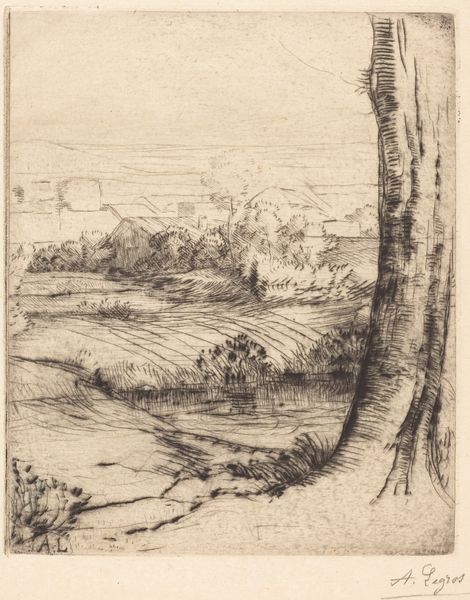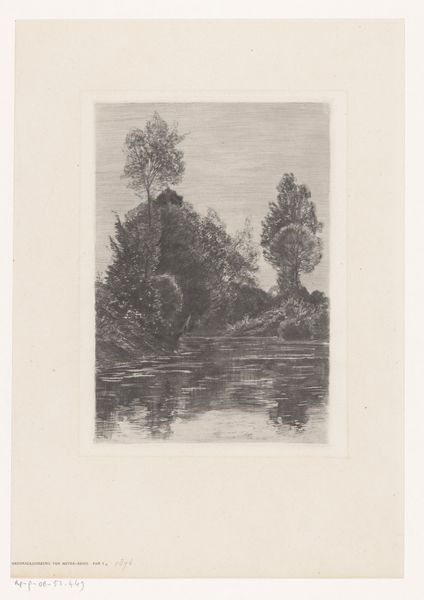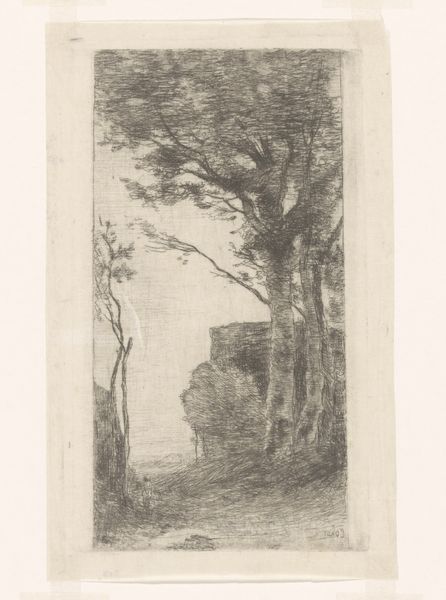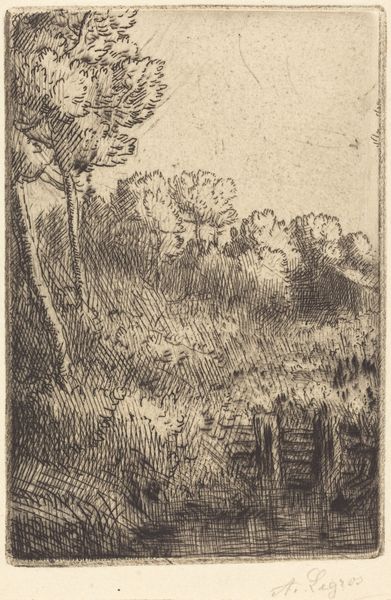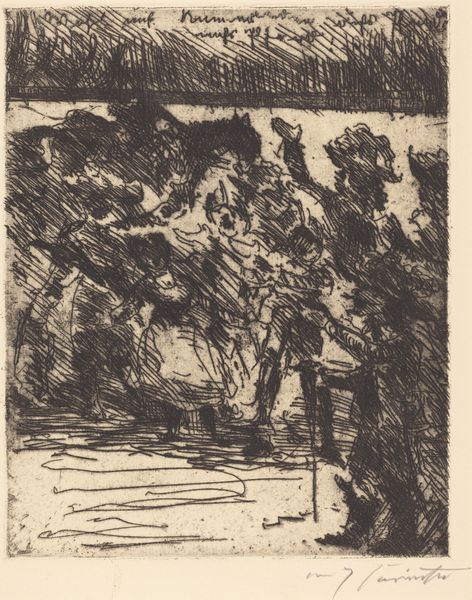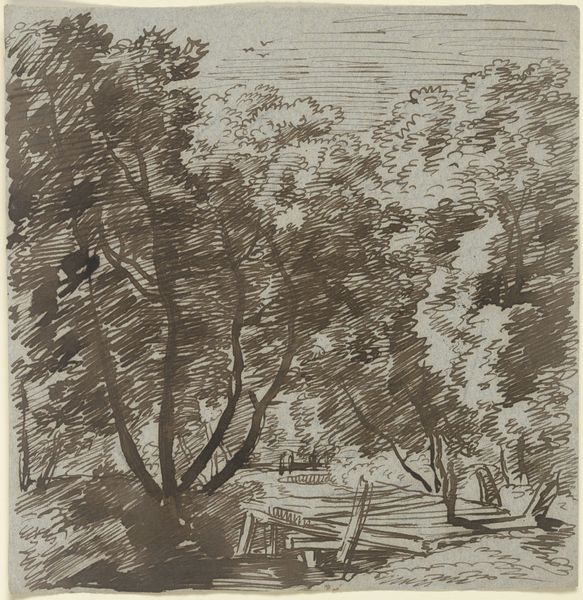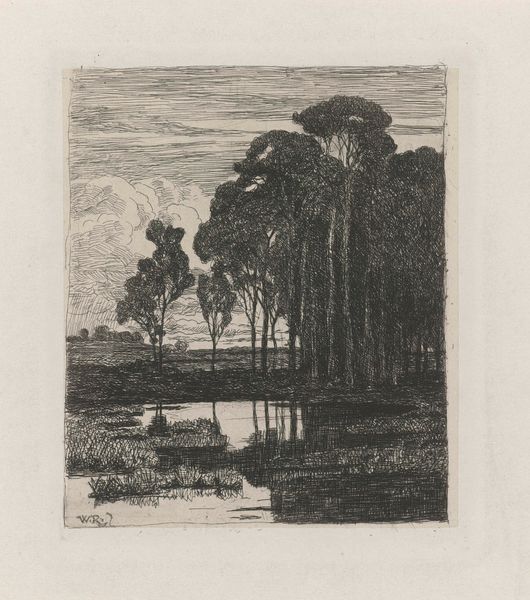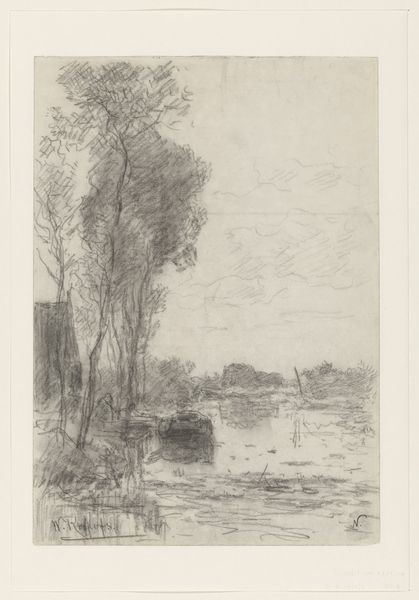
drawing, print, engraving
drawing
landscape
romanticism
engraving
Dimensions Mount: 5 3/8 × 7 11/16 in. (13.6 × 19.5 cm) Plate: 2 1/4 × 1 3/4 in. (5.7 × 4.4 cm)
Curator: This is "La Marais," or "The Swamp," an 1849 engraving by the French artist Rodolphe Bresdin, now residing at the Metropolitan Museum of Art. Editor: Immediately, I’m struck by this overwhelming feeling of confinement. It's as if the artist wants us to feel trapped by the density and darkness. Curator: Bresdin certainly excels at creating atmosphere. Swamps have, across cultures, been understood as spaces of transition, boundaries between worlds, rife with symbolism relating to death and rebirth. Does the emotional intensity tie into the sociopolitical unrest of 1849, after the failed revolutions of 1848? Editor: I think it's unavoidable. The political turmoil likely seeped into all facets of artistic creation. Bresdin's romanticist style amplifies the mood with its dramatic, detailed landscape. You feel the dampness, almost smell the decay. What seems to me to be working-class figures are almost completely enveloped in this darkness. Are they being symbolically consumed? Curator: Perhaps, and note how the skeletal trees loom over them like specters, a classic symbol of nature's power. The density almost becomes oppressive, reflecting anxieties about social mobility, perhaps, or the limited possibilities available in post-revolutionary France. It’s about an unvarnished truth. Editor: Right. Swamps, literally and metaphorically, become spaces where things sink and disappear. Given Bresdin's own financial struggles, perhaps this work comments on broader social systems failing certain populations. This micro-landscape contains larger macro concerns. The tiny figures beneath are also in an almost constant struggle to escape that oppressive weight. Curator: Yes, his commitment to meticulously detailing nature almost elevates these working-class figures by positioning their world within an ecosystemic understanding. A spiritual journey as much as a social reality? Editor: The journey has, though, been framed through a distinctly class-conscious lens, which I feel like is often disregarded. We often ignore how historical contexts intertwine with what can be a psychological read. The romantic landscape tradition certainly paved the way. Curator: Indeed. By looking closer, we’ve found this deceptively simple landscape mirrors some complex social tensions. Editor: A compelling conversation about how romanticism and social awareness intersect.
Comments
No comments
Be the first to comment and join the conversation on the ultimate creative platform.
